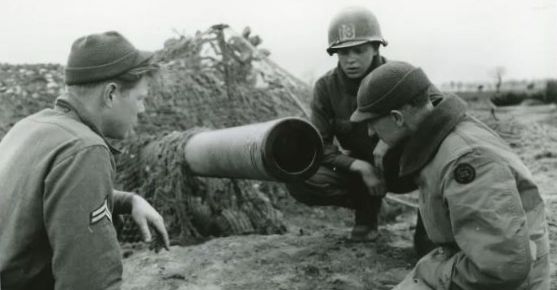Authors:
Historic Era: Era 9: Postwar United States (1945 to early 1970s)
Historic Theme:
Subject:
Summer 2023 | Volume 68, Issue 4


Authors:
Historic Era: Era 9: Postwar United States (1945 to early 1970s)
Historic Theme:
Subject:
Summer 2023 | Volume 68, Issue 4

Editor's Note: David Chrisinger directs the Public Policy Writing Workshop at the University of Chicago, and is the author of several books, including The Soldier's Truth: Ernie Pyle and the Story of World War II, from which he adapted portions of this essay.
The dead men’s gear and clothing, mud-caked and bloody, was brought by the truckload, five or six per day, to a salvage dump near the beachhead that was managed by the army’s Quartermaster Corps. Black soldiers were tasked with the grisly job of sorting, classifying, and cleaning the litter.
“They poke through the great heap,” Ernie Pyle wrote, “picking out shoes of the same size to put together, picking out knives and forks and leggings and underwear and cans of C-rations and goggles and canteens, and sorting them into different piles.” Everything that could be used again would be sent back to Naples for restoration and repair.
As Pyle looked on, he felt tight-lipped and dejected. The inanimate objects shouted to him from the great pile. There was the helmet with a bullet hole. And an overshoe ripped to hell by shrapnel. Then there was an irreparably smashed portable typewriter. And a pair of muddy pants. One leg was gone.
“When you get to Anzio, you waste no time getting off the boat, for you have been feeling pretty much like a clay pigeon in a shooting gallery,” Pyle wrote in a column on March 28. “But after a few hours in Anzio, you wish you were back on the boat, for you could hardly describe being ashore as any haven of peacefulness.”
“This is a new kind of warfare for us,” Pyle continued. “Here, distances are short, and space is confined. The whole beachhead is the front line.”
Soldiers closest to the German defensive positions flattened themselves into shallow foxholes — which afforded neither comfort nor safety — necessitated by the high-water table. Soldiers closer to the coastline had it much better. The sandstone around Nettuno made it possible for enterprising soldiers to mine deep into the substrata.
See also “Agony and Triumph at Anzio” by Flint Whitlock in our Winter 2019 issue.
“Men have dug underground and built themselves homes,” Pyle reported; the subterranean shelters were complete with pilfered furniture and random bits of detritus that gave the warm and dry lairs a more homey, secure feel.
Back at his typewriter, Pyle’s fingers hurt from the cold. They were so stiff, he could barely peck at the keys. It was the middle of March, and spring had not yet sprung along the Tyrrhenian Sea forty miles south of Rome. “We’ll have one or two perfectly awful days, cold and dark and pouring rain,” Pyle wrote to his wife Jerry, “then about three days of beautiful sunshine and